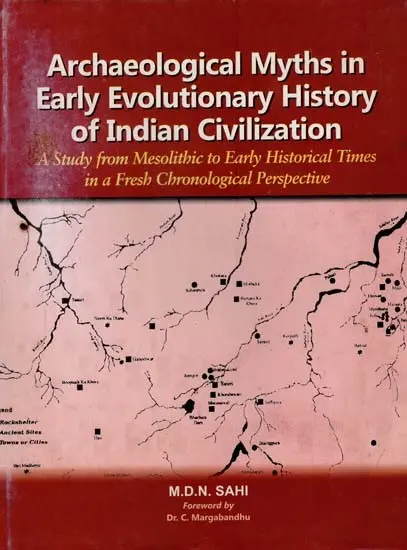
| Specifications |
| Publisher: Rishi Publication, Delhi | |
| Author: M.D.N. Sahi | |
| Language: English | |
| Pages: 397 (Throughout Color and B/W Illustrations) | |
| Cover: HARDCOVER | |
| 11.50 X 9.00 inch | |
| Weight 1.30 kg | |
| Edition: 2018 | |
| ISBN: 9788193463604 | |
| UAT064 |
| Delivery and Return Policies |
| Usually ships in 3 days | |
| Returns and Exchanges accepted with 7 days | |
| Free Delivery |
Comprising ten independent chapters that certain prevailing archaeological concepts or theories are just myths. They do distort the authentic reconstruction of the history of Indian Civilization According to his reconstruction the Indian Civilization now identified as the Harappan as well as the Early Vedic cultures both evolved in five stages. Having rooted its beginning/origin in the Aceramic Mesolithic Culture of Madhyadesa in Rajasthan (Stage 1), the people produced plain hand-made pottery with incised designs externally and invented copper technology during the Advance Mesolithic period (Stage 2). Copper accelerated the pace of their evolution and development and they got transformed into the chalcolithic way of life (Stage 3) without passing through the Neolithic phase. Datable between 6500 BC to 3100 BC this stage 3 was characterized by the Hakra-OCP ceramic complex.
Prof. Sahi identifies these people as the Aryans. His view is based on the occurrence of exclusively OCP in the occupational deposits of some of the rock shelters on the hilly tracts of the Aravallis along the river Sahibi in Rajasthan, while the painted theme on the walls of some of the rock-shelter are interpreted by him as the renderings of the Rigvedic hymns. Prof. Sahi thus propounds the view that Aryans were not only the indigenous people of India from the Mesolithic stage but also corroborates the refutation of the Aryan Invasion Theory.
Another significant achievement of these people was the creation of a system of writing in the form of graffiti marks on pottery which later on evolved into the Harappan script. He also holds that the disposal area of these people was from the Western Valley of the Indus to the mid-Ganga valley. During the later part of this period some intrusions of the people from Western Asia can be noticed by the presence of their settlements in the western valley of the Indus, giving rise to coexistence of indigenous and the intruders in this region. The settlements of Stage 3 suffered devastation and decline due to a massive Deluge identified by Prof. Sahi as the Deluge of the time of Manu Vaivasvata.
Prof. M.D.N. Sahi was born. in 1932 at Varanasi, UP. He obtained his degrees of LLB and M.A. from University of Allahabad in 1955 and 1958 respectively, PGDA from the School of Archaeology of Archaeological Survey of India in 1962, Ph.D from Aligarh Muslim University in 1979. He started his academic career as a lecturer in 1962 and finally retired as the Professor of Archaeology and Ancient History from Aligarh Muslim University, in 1994. The topic of his self supervised Doctoral thesis was 'Comparative Chronology of Iron Age Cultures of India and the Role of Iron in Socio-Economic change'. Though it remained unpublished due to various reasons, his published views were immediately acclaimed and accepted by reputed authorities on the subject.
Prof. Sahi has to his credit vast experience of excavations and explorations of various sites. He participated in the excavations at Rajghat, Kausambi, Kalibangan, Artranjikhera, Lal Qila and directed the horizontal excavations of Jakhera a PGW site, for seven seasons, the last five seasons being under the Major Research Project of UGC. He has presented about eight research papers at National and International seminars and conferences, which were published in reputed Journals. The divergent topics of his research were related to Numismatics, Political History of Ancient India, Socio-Economic History and Archaeology of Ancient India. He was invited as Visiting Professor by the University of Allahabad. He attended the World Archaeological Congress held at Southampton, U.K. in 1986. His book entitled 'Aspects of Indian Archaeology' was published in 1994. Presently he is engaged in the study of various aspects of Chalcolithic Cultures of India. Prof. Sahi is the founder Life Member of the Indian Archaeological Society and Life Member of Society for Pre-historic and Quaternary Studies.
In the concluding chapter of The Personality of India (First Edition, 1956), Prof B. Subba Rao describes the emerging picture as "a crossword puzzle....with so many interlockers and probable alternative solutions" and lays down in the development of any studies there are three stages involved. "In the early stages of bringing some order into the chaos, we start with a bold working hypothesis. The second stage begins with the application of this key solution In the initial phase this results in a very apparent simplifications and easy generalisations... My account is at best an attempt at correlating the sequence of cultures...in time and space within the framework of a very tentative chronology. The third and final stage is when we follow this tentative scheme with a more critical examination based on much more evidence and intensive field work. More complications will rise but we can face them given patience, skill and resources."
These words were penned more than half a century ago,great yet practical statement of facts of prophetic nature that paved the way for subsequent academic contributions presenting the various facets in continuity and the sequence of archaeological history of the regions of the country taking into account the totality of the development of cultures as a whole. The first one was perhaps of a pioneering nature by Sir Mortimer Wheeler Early India and Pakistan, London, 1959 represents a path breaking study of cohesive nature and concludes that "....and behind the interplay of material and geographical opportunity lies the Mind of India which for all the recklessness inherent in so immense a generalisation may be said to show a surprising uniformity of response amidst an infinite diversity of background" and sums up "ever and anon India leaps from its sleep and grasps new ideas new opportunity with quick and prehensile intelligence". A decade later came the publication by the renowned Archaeologist and scholar on Indian culture in association with his wife,equally a well known prehistorian 'Raymond and Bridget Allchin' in the birth of Indian civilization, 1968 in which the authors seek to present a digest of the results of a great body of research, much of it barely completed, as far as possible interims of the data themselves as the authors see them....there are still so many gaps to be filled and questions to be answered".
regard to the purpose of writing this book let me cite the opinion of my revered guru Prof. B.B. Lal. While writing the foreword of the book Archaeology of the Ganga Basin-Paradigm Shift edited by Prof. Vibha Tripathi and published in 2010, he observes that "over the decades, the archaeological evidence has been accumulating, not in arithmetic but geometric proportions, and hopefully will continue to do so in the foreseeable future. Hence there is a need for a time to time reassessment. The present work is inspired by the desire to fulfill this need for a time-to-time reassessment of the archaeological evidence in my own way with malice towards none.
Reconstruction of the Early Evolutionary History of Indian Civilisation, particularly its origin, stages of evolution and development upto the final achievement of the urban stage of its settlements and its legacies continued in its successive cultural stages, its interactions with other contemporary cultures and its decline depends on how relevant the authentic data both archaeological and literary are interpreted logically in a reliable chronological frame work. In this study proper identification of the indigenous and external elements are also necessary. Interpretations of evidences have been given by prominent archaeologists of India and abroad in the past according to their own perceptions, which are accepted and followed as such by many scholars. These perceptions may now be viewed as theories or concepts.
In the reassessment of the hitherto proposed understanding of related aspects of Pre and Proto historical cultures of India by several scholars, basically three factors seem to be emerging.
The first factor is the reassessment of the authenticity of the concepts and interpretations proposed earlier. The present author proposes alternative interpretations for the same concepts for the perusal of the readers in the form of independent chapters in this book. This is inspite of the fact that old perceptions hardly die out as pointed out by Prof. B.B. Lal in his book Sarasvati Flows on: The Continuity of the Indian Culture published in 2002 (p. 67). He observes that it is interesting, nay even amusing to look back and see, how historical theories take birth, are sustained and become engraved in the psyche that it becomes next to impossible for conservative scholars to look back at the mounting new evidence which goes against their long cherished view. These observations were made in context of the Aryan Invasion Theory, but it appears to be valid in cases of other historical and archaeological theories also discussed in this book.
**Contents and Sample Pages**
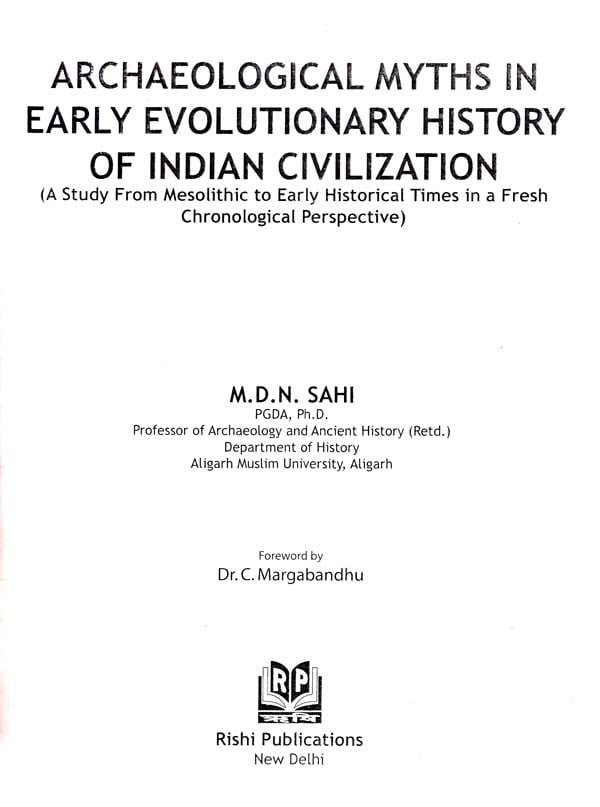
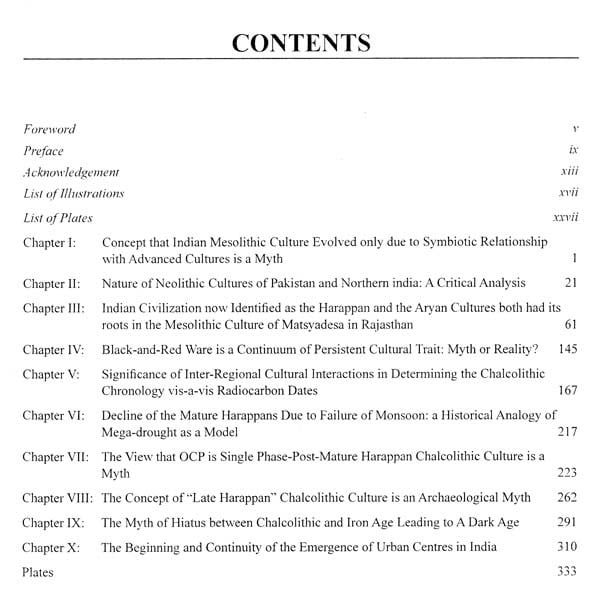

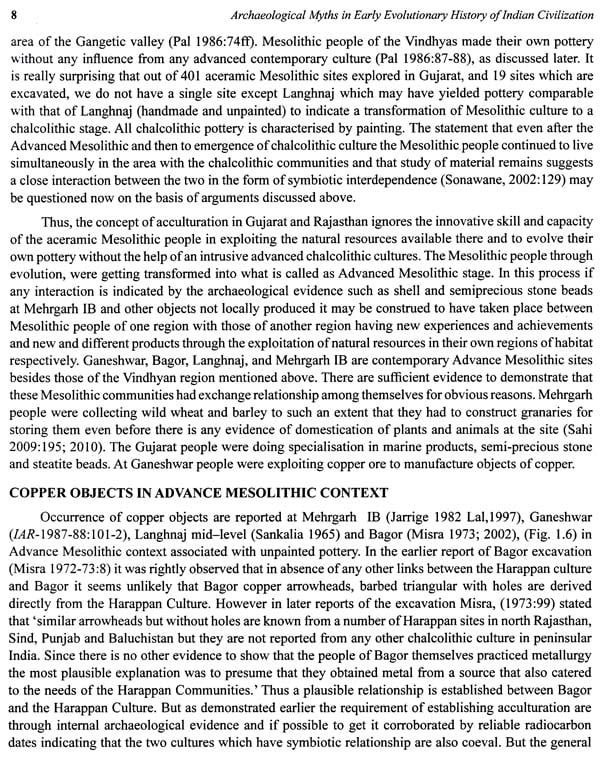
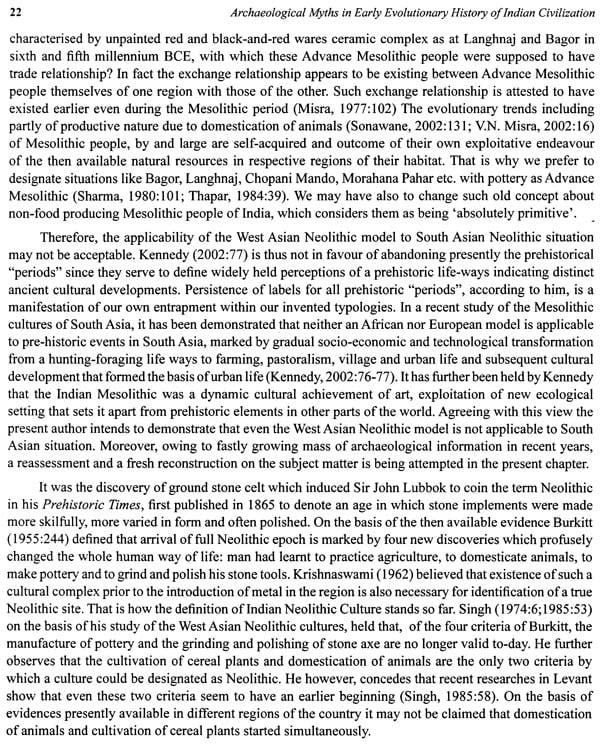

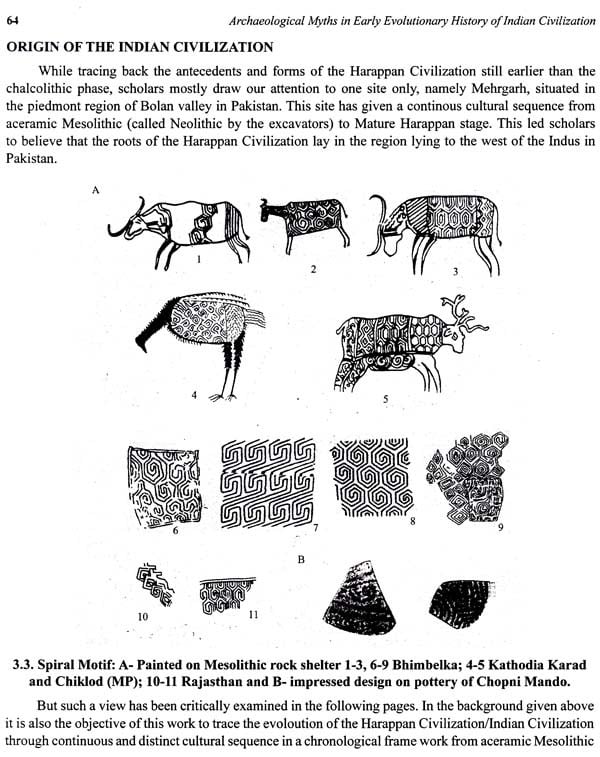
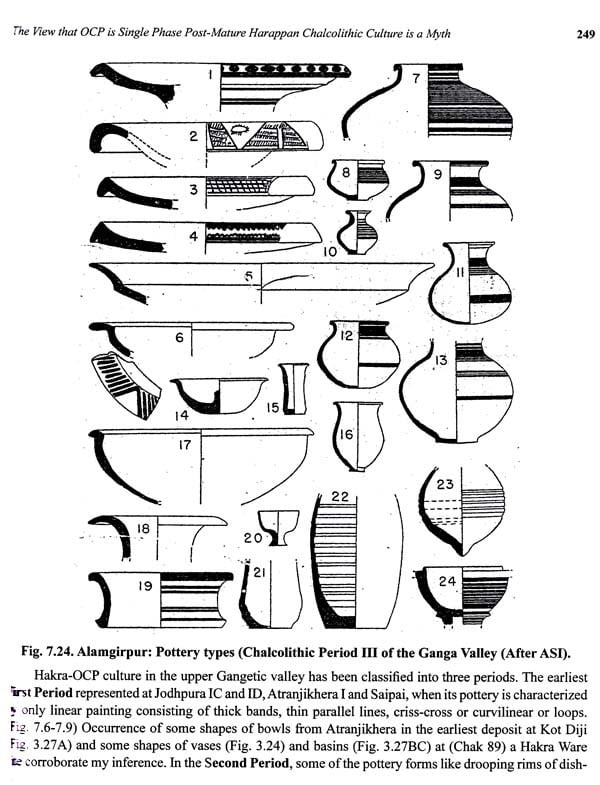
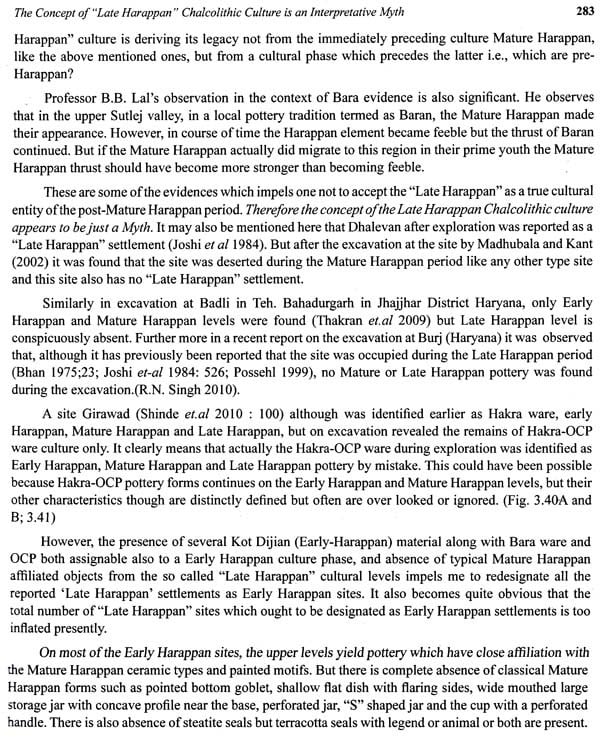

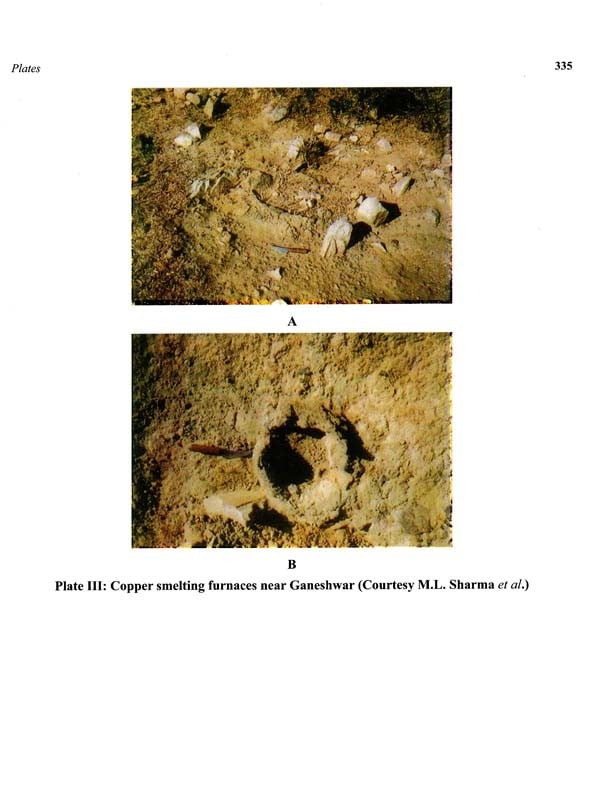
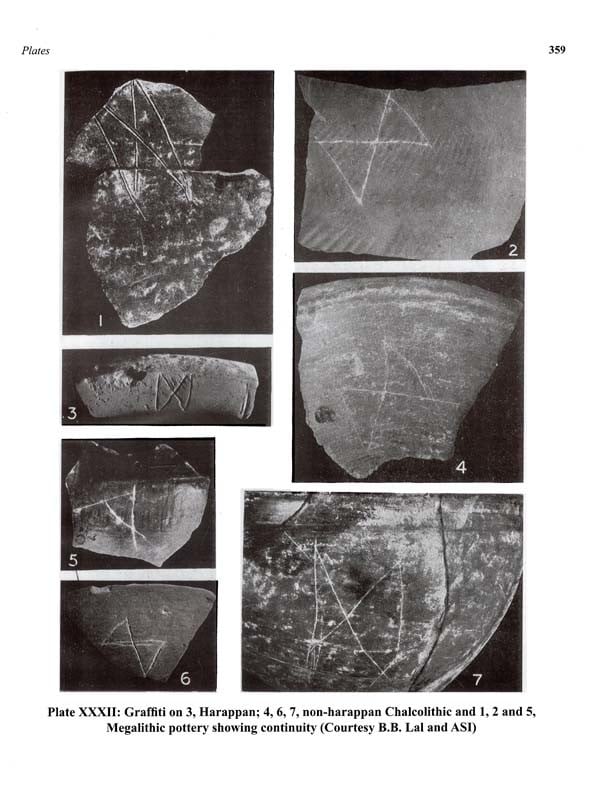
Send as free online greeting card
